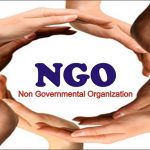 In his song Rat Race, Bob Marley cautions, “in the abundance of water, the fool is thirsty”.
In his song Rat Race, Bob Marley cautions, “in the abundance of water, the fool is thirsty”.
Before the turn of the millennium, gold was Zimbabwe’s lead export earner along with tobacco. Then the Platinum Group of Metals (PGMs) came into the mix in early 2000, followed by diamonds towards the end of the decade. Now we are talking about white gold – lithium, a green energy mineral widely sought after globally.
Recently, Zimbabwe declared a record gold output for 2022; 35 tonnes. Amidst all these natural assets, the government is still “incapacitated” to invest in essential public health, education services, and infrastructure.
Why? These are the effects of corruption.
The discussion of corruption and resource mobilisation in Africa gains high voltage from the UN’s Economic Commission for Africa (UNECA)’s High-Level Panel on Illicit Financial Flows from Africa Report 2015.
Far from the popular narrative, Multinational Corporations (MNCs) are the chief culprits when it comes to the plunder of resources on the continent, accounting for 65% of the US$50 billion lost via illicit financial flows (IFFs). The latest data from the UN’s Conference on Trade and Development (UNCTAD) shows that IFFs from Africa have nearly doubled.
While accounting for 5% of the losses via IFFs, corruption facilitates the plunder of resources by MNCs and criminal activities. The latter is responsible for 30% of the losses.
One of the largest companies globally in the mining, oil, and gas industry, Glencore, was last year fined US$1.1 billion by the US government for corrupt activities predominantly in Africa. Glencore has also agreed to pay US$180 million to the Democratic Republic of Congo to use the legal brush to sweep under the carpet claims arising from its corrupt practices spanning over a decade.
From the Glencore case, we see why it is important to focus on the role of MNCs in the profuse bleeding of resources to finance development on the continent. And this is the core mandate of the Stop the Bleeding (STB) campaign in Africa as it focuses on mass awareness and mobilisation to increase the political costs of inaction at country, continental and global levels.
Reflecting on Transparency International (TI)’s 2022 Corruption Perception Index (CPI) ranking for Zimbabwe, 157 out of 180 assessed countries, we must be careful not to be lost in the numbers debate. People are suffering severely, and poverty and inequality are growing. We must put a human face on the ranking. TI’s CPI focuses only on public sector corruption.
My sister, a teacher, failed to get any meaningful medical aid assistance from the Premier Services Medical Aid Society (PSMAS) for the operation to remove a lipoma, a condition that has been bothering her for the past five years. She has been working for the government for more than two decades.
Lipoma, according to Cleveland Clinic, a nonprofit American academic medical centre, “is a lump of fatty tissue that grows just under the skin.” Family members had to chip in to cover medical bills of close to US$1 100.00 for her treatment.
If the government fails to provide health care services to its workers, what signal does it send on how the government is treating the poor and marginalised groups in society?
In 2014, a massive corruption scandal was unearthed at PSMAS after its members, mainly civil servants, failed to access medical services because PSMAS failed to pay service providers.
Ironically, the PSMAS managers were being paid millions of dollars, of which their wages and benefits were illegally shielded from tax. It feels like double jeopardy in that family members who are paying taxes to the government are subsidizing the same government health services.
By Mukasiri Sibanda- Mukasiri is a Tax and Natural Resource Governance Advisor and coordinator of the Stop The Bleeding campaign, a consortium of organisations fighting illicit financial flows from Africa
(74 VIEWS)

